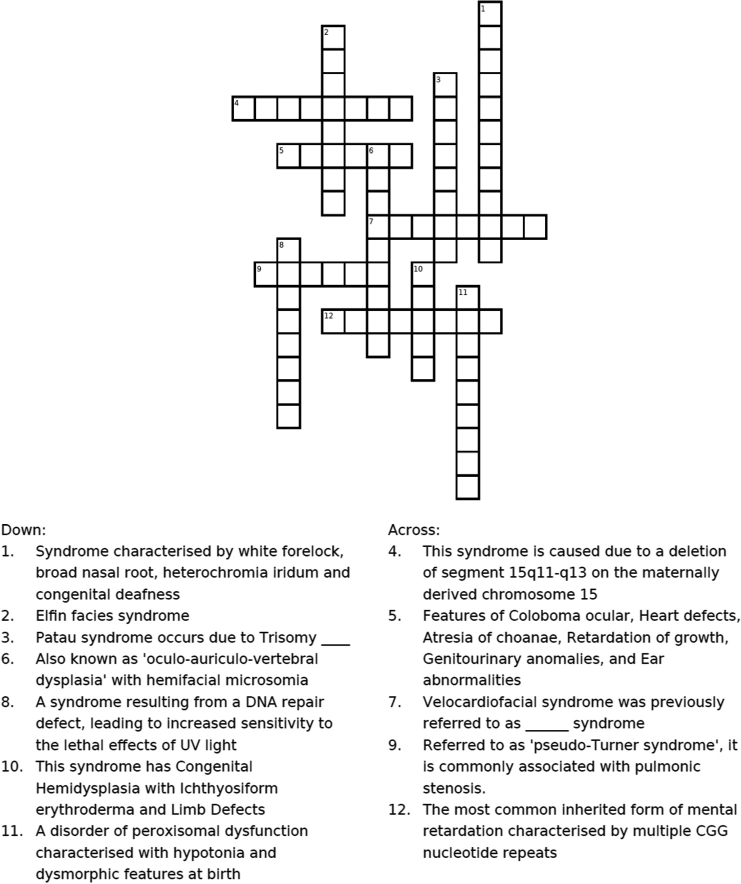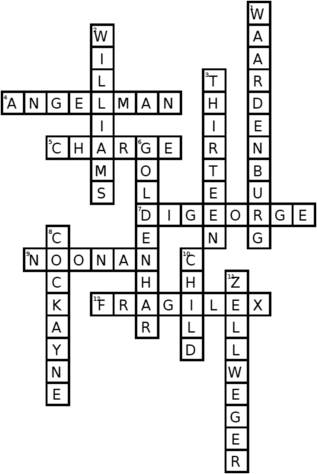Translate this page into:
Neo Cryptic – Decoding for the PG
*Corresponding author: Namisha Goyal, MBBS, DA, DNB, Resident Physician, Department of Anaesthesia, Alexandra Hospital, National University Health System, Singapore. dr.namishagoyal@gmail.com
-
Received: ,
Accepted: ,
How to cite this article: Goyal N. Neo Cryptic – Decoding for the PG. J Neonatal Crit Care Anesth. doi: 10.25259/JNCCA_7_2024
NEONATAL SYNDROMES CROSSWORD

NEONATAL SYNDROMES CROSSWORD ANSWERS

TRIVIA FOR NEONATAL SYNDROMES
Down syndrome
Down syndrome is named after John Langdon Down, who was the first to categorize the common features of people with the condition.
Dr. Jerome Lejeune discovered that Down syndrome is a genetic disorder whereby a person has three copies of chromosome 21 instead of two.
Hall’s criteria for diagnosing Down syndrome
Flat face
Upslanted palpebral fissure
Small dysplastic ear
Short neck with redundant skin
Hypotonia
Poor Moro reflex
Hyperflexible joints
Simian crease
Short fifth finger with clinodactyly
Pelvic dysplasia
“Syndromes without a name” (SWAN)
The SWAN is a term used when children have symptoms of genetic conditions but cannot yet be diagnosed.





